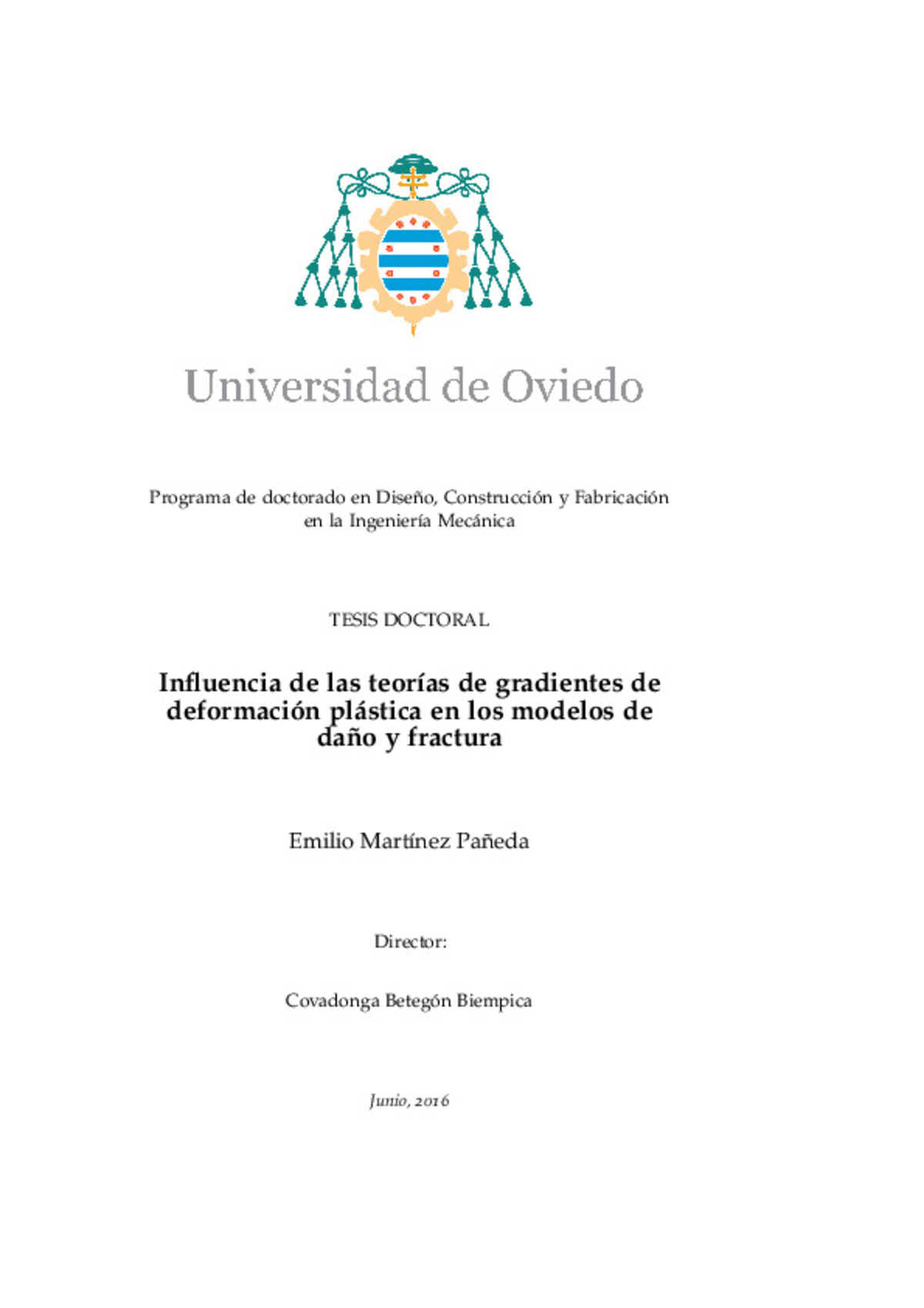Strain gradient plasticity-based modeling of damage and fracture
Otros títulos:
Influencia de las teorías de gradientes de deformación plástica en los modelos de daño y fractura
Autor(es) y otros:
Director(es):
Centro/Departamento/Otros:
Palabra(s) clave:
Diseño, construcción y fabricación de la ingeniería mecánica
Plasticidad
Mecánica de medios continuos
Mecánica de sólidos
Hidrógeno
Fecha de publicación:
Descripción física:
Resumen:
Experiments have consistently shown that metallic materials display strong size effects at the micron scale, with smaller being harder. As a result, a significant body of research has been devoted to model this size dependent plastic phenomena. At the continuum level, phenomenological strain gradient plasticity (SGP) formulations have been developed to extend plasticity theory to small scales. Grounded on the physical notion of geometrically necessary dislocations (GNDs, associated with non-uniform plastic deformation), SGP theories relate the plastic work to both strains and strain gradients, introducing a length scale in the constitutive equations. While growing interest in micro-technology motivated at first the development of SGP models, the influence of GNDs goes beyond micron-scale applications, as strains vary over microns in a wide range of engineering designs. Particularly, gradient-enhanced modeling of fracture and damage appears imperative - independently of the size of the specimen - as the plastic zone adjacent to the crack tip is physically small and contains strong spatial gradients of deformation. In this work a general framework for damage and fracture assessment accounting for the role of GNDs is provided. Different classes of gradient plasticity theories with ad hoc novel numerical schemes are employed. Emphasis is given to develop robust computational tools to predict and understand material failure mechanisms. Results show a very strong influence of GNDs, revealing the need to incorporate gradient effects to adequately characterize behavior at the small scales involved in crack tip deformation. Encouraging quantitative agreement with experimental data is achieved by incorporating features of the underlying microstructure (GNDs). The richer continuum characterization of stress and hydrogen concentration in the fracture process zone leads to particularly promising results in hydrogen environmental assisted cracking modeling, a field of great engineering interest that continues to plague applications of high strength metals.
Experiments have consistently shown that metallic materials display strong size effects at the micron scale, with smaller being harder. As a result, a significant body of research has been devoted to model this size dependent plastic phenomena. At the continuum level, phenomenological strain gradient plasticity (SGP) formulations have been developed to extend plasticity theory to small scales. Grounded on the physical notion of geometrically necessary dislocations (GNDs, associated with non-uniform plastic deformation), SGP theories relate the plastic work to both strains and strain gradients, introducing a length scale in the constitutive equations. While growing interest in micro-technology motivated at first the development of SGP models, the influence of GNDs goes beyond micron-scale applications, as strains vary over microns in a wide range of engineering designs. Particularly, gradient-enhanced modeling of fracture and damage appears imperative - independently of the size of the specimen - as the plastic zone adjacent to the crack tip is physically small and contains strong spatial gradients of deformation. In this work a general framework for damage and fracture assessment accounting for the role of GNDs is provided. Different classes of gradient plasticity theories with ad hoc novel numerical schemes are employed. Emphasis is given to develop robust computational tools to predict and understand material failure mechanisms. Results show a very strong influence of GNDs, revealing the need to incorporate gradient effects to adequately characterize behavior at the small scales involved in crack tip deformation. Encouraging quantitative agreement with experimental data is achieved by incorporating features of the underlying microstructure (GNDs). The richer continuum characterization of stress and hydrogen concentration in the fracture process zone leads to particularly promising results in hydrogen environmental assisted cracking modeling, a field of great engineering interest that continues to plague applications of high strength metals.
Descripción:
Tesis con mención internacional
Notas Locales:
DT(SE) 2016-153
Colecciones
- Tesis [7677]
- Tesis doctorales a texto completo [2172]
Ficheros en el ítem





